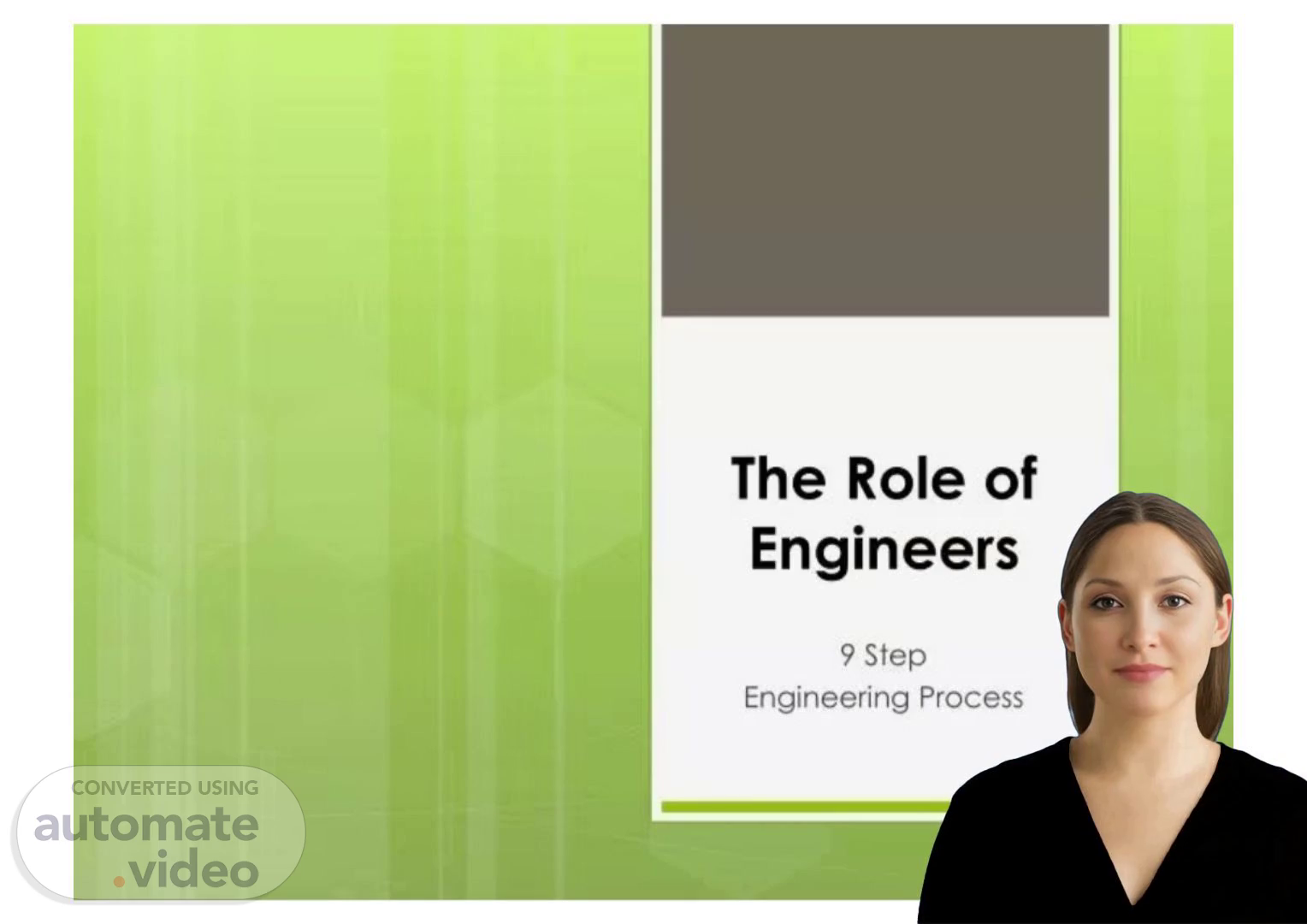Scene 1 (0s)
[Virtual Presenter] Good morning everyone. We are glad that you have taken the time to join us for this presentation. We will be giving you an overview of our company's history, services, capabilities, and our future goals and plans. We hope that this information will be useful to you and we welcome any questions and comments you may have. Let's begin..
Scene 2 (25s)
[Audio] Engineers possess an unrivalled ability to bring creative solutions to real-world problems, employing their understanding of mathematics and science to improve everyday life. From constructing buildings and machinery to inventing computer software and medical treatments, engineers have been instrumental in shaping the world as it is today. Thanks to their efforts, we can enjoy an enhanced standard of living that is both convenient and healthy..
Scene 3 (53s)
[Audio] Identifying a problem or need is the first step of our Engineering Process. This could be an issue with an existing product or the desire to create a new one. We are committed to finding the most suitable solutions to fulfill your needs..
Scene 4 (1m 10s)
[Audio] Engineers must identify design constraints at step two of the engineering process. These constraints consist of requirements that limit the design of products, including functions, money, time, materials, etc. Furthermore, the scope and quality of the product must also be taken into account..
Scene 5 (1m 32s)
[Audio] In Step 3 of the Engineering Process, Gathering Information and Research is essential. Doing this correctly is key to having an accurate engineering process and improving its efficiency, as it allows engineers to learn from others' mistakes or create better solutions..
Scene 6 (1m 50s)
[Audio] Engineers conduct research in order to begin the engineering process. Subsequently, they generate possible designs based on this research to solve the design problem. Out of these possible designs, the engineer selects the most viable and further develops it..
Scene 7 (2m 9s)
[Audio] Our team assesses the proposed solutions in step five of the engineering process to determine which will work. We then evaluate the best ideas according to their functionality, safety, cost-effectiveness and value to customers. We ensure that the highest quality product is delivered by utilizing these criteria..
Scene 8 (2m 31s)
[Audio] Engineers must use the data and information obtained from the preceding steps to identify the most suitable solution for the project, taking into consideration all of the relevant factors and variables that could affect its design. Upon completion of this process, engineers have to make a decision based on their assessment of the data, envisioning how the desired product should be when finished..
Scene 9 (2m 55s)
[Audio] A prototype of the selected design must be built as the seventh step in the engineering process. It should be an exact replica of the design in terms of size and features. Testing the prototype allows the company to assess its functionality and make sure it works correctly. If the results of the prototype testing are satisfactory, then the product can proceed to further testing..
Scene 10 (3m 22s)
[Audio] The eighth step of the engineering process involves testing the prototype to assess its design. This testing helps to detect and address any potential issues in the design prior to mass-producing and selling the product..
Scene 11 (3m 37s)
[Audio] It's time to evaluate the replica - will it fly? Refining the prototypes and improving the final product is the focus of step nine of the engineering process. If needed, any of the earlier steps can be repeated to make sure the replication is exact. That concludes step nine of the engineering process..
